Located on the border between the Jewish and Arab sections of Jerusalem, it will be a place of spirituality, study, dialogue and formation for the Holy City and for the whole world.
A French historian once wrote that Jerusalem does not belong to Jerusalem, because it is a city of the world, a city where people of the whole world meet, again and again, face to face, to confront each other and to challenge each other. It is a place where some seek to practise peaceful cohabitation – while others seek war, where some strive to spread a sense of common belonging – while others try to spread hatred.
In fact, it is easy to give in to the temptation to see only what the almost daily news reports tell us about the Holy City – about the violence between the Jews and the Palestinians and the unending struggle of the Christians…
But is this all there is to Jerusalem? Is there still room for hope and for the prophetic role this city has for the entire world?
Chiara Lubich was always convinced that there is room for hope. She went to the Holy Land for the first time in 1956 and among the holy places she visited, there was one in particular that moved her. It’s called the “Scaletta,” and it refers to the ancient Roman white stone steps, just outside the walls of the old city, next to the church of Saint Peter in Gallicantu. According to tradition, Jesus walked along those steps in the evening after the Last Supper, on his way to the garden of Gethsemane. Also according to tradition, it was on those very stones that he uttered his prayer for unity: “Father that all may be one…”
Here is how Chiara Lubich described the strong impression this place had on her. In her diary she wrote:
“It was here that their Teacher, whose hour of death was drawing near, prayed to the Father. His heart was full of tenderness for his disciples, who had, yes, been chosen by Heaven, but who were still weak and without understanding. Jesus prayed to the Father in his own name and in the name of all those for whom he had come and for whom he was ready to die: “Holy Father, protect them in your name that you have given me, so that they may be one, as we are one” (Jn 17:11 NRSV). There he called upon the Father to make us his children, even though we were far from him through our own fault, and to make us brothers and sisters, in the strongest unity, that which is divine.”[1]
From that moment, it was Chiara’s desire that a centre for dialogue and unity could one day be born on this tiny piece of land.
In the 1980’s there came an important turn of events. A plot of land adjacent to the Roman steps became available. Slowly the project advanced and approval was granted in 2016. Recently the excavations for the building works have been carried out.
The future “Centre for Unity and Peace” received a precise mandate from Chiara: it is to be a place of spirituality, study, dialogue and formation. It is to be a place open to people of different ages, cultures, beliefs and backgrounds. It must foster encounters and opportunities to learn about others and so promote authentic relationships.
Another decisive moment came in February 2019, when Maria Voce, president of the Focolare Movement, placed a small medal of Our Lady into the soil as an important initial sign for the construction of this centre. The project is to be a multi-purpose structure, suitable for hosting events and initiatives of various kinds at both local and international levels.
It is now possible to contribute in various ways to support the construction of the centre. Click here for all the necessary information.
Stefania Tanesini
[1] Chiara Lubich, Scritti Spirituali/1: L’attrattiva del tempo moderno, Citta Nuova Editrice, p.172-179


 Italiano
Italiano Español
Español Français
Français Português
Português
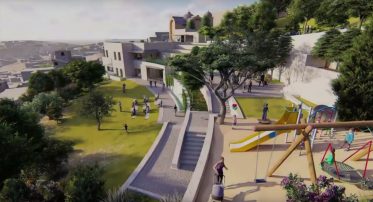
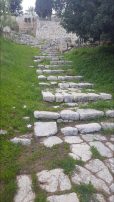
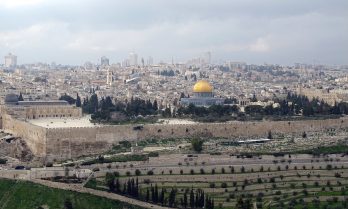
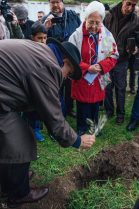
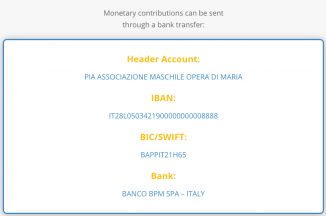

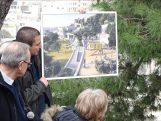
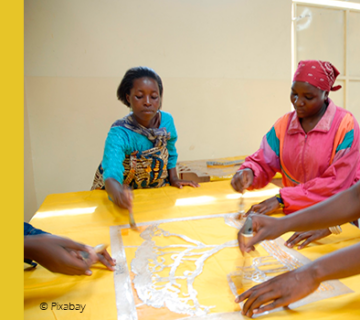



Muy conmovida al conocer ésta experiencia de Chiara en Jerusalén en 1956. Su intuición, el cuerpo que somos y los tiempos de Dios – sesenta tres años cronológicos transcurridos- en concretar el centro para el diálogo y la unidad, en un terreno al lado de la ‘Escalerita’.
Antigua escalera romana de piedra blanca, donde, cómo ella nos dice “Aquí el Maestro, ya próximo a la muerte, con el corazón lleno de ternura hacia sus discípulos, elegidos por el Cielo, sí, pero todavía frágiles e incapaces de comprender, elevó al Padre su oración en nombre propio y en nombre de todos aquellos por quienes había venido y por los que estaba dispuesto a morir: «Padre santo, cuida en tu nombre a los que me has dado, para que sean uno como nosotros». Allí, Jesús le había suplicado al Padre que nos ahijara, aunque estuviésemos alejados por nuestra culpa, y que nos hermanara entre nosotros en la más firme, por ser divina, unidad”.
Comprender con mayor conciencia que estamos cada uno y cada cual, en esa oración, me hizo volar con el alma en el proceso vivido en la historia personal, familiar y comunitaria que experimentamos como familia de Chiara en la Iglesia y la Humanidad.
Fue en una encrucijada de ésta vida, recién estrenada mi viudez, en una experiencia de encuentro interpersonal con un desconocido, el conocimiento del otro tuvo una sorpresiva continuidad en mí, llegando a vivir una relación auténtica, por la Presencia de cuidado en nuestra fragilidad e incapacidad de comprender, hermanando nos en la más firme unidad. Experiencia de perdón y riqueza de las diferencias por la reciprocidad de dones, que superando prejuicios y miedos, expandió mi corazón en el amor que hemos recibido gratuitamente y nos transforma en instrumentos transparentes para que llegue a todos. También a las profundas fragilidades y traumas que vivimos entre nosotros ….ya que somos humanos, estamos en camino y es el tiempo de actualización en la encarnación del Ideal en nuestra humanidad, para ser don de unidad en el cuerpo eclesial y social,